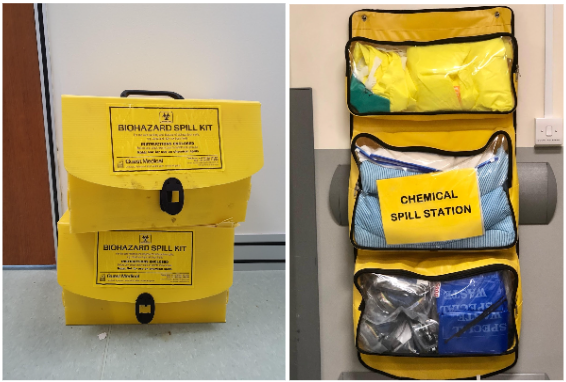Chapter Progress
0% Complete
Get Bloodborne Pathogens Certified Today
Learning Objectives
At the end of this section, the learner will:
- Describe the appropriate procedure for cleaning up hazardous spills.
- Describe the proper method for cleaning equipment.
Decontaminating medical equipment and the workplace itself helps to maintain a safe environment for workers. Facility policies and procedures ensure that all areas and all reusable equipment undergo proper decontamination and cleaning before the next use.
Reusable equipment such as defibrillators and backboards must be cleaned and disinfected before use with the next patient. The same is true of surfaces and equipment in an ambulance, operating room, emergency department room, or patient care room.
Some pointers for providers tasked to clean an environment with hazardous spills include the following:
- The appropriate PPE should be worn depending on the situation or area—at a minimum, protective gloves should always be worn.
- The area of concern should be blocked off so that others will not be exposed—barricade tape can be used to delineate the area of concern.
- Cleaning detergents and disinfecting agents used should be appropriate for the situation. If a biohazard spill kit is available, it should be utilized when appropriate.
- Cleaning always precedes disinfection. For a smaller-sized spill, the area should be cleaned with a disposable absorbent cloth or paper towel and then disinfected. With larger spills, the blood may need to be mopped or otherwise cleaned away first, and then a disinfectant used to clean the area.
- Staff must know the kill time for the disinfectant chemicals they are using and adhere to those guidelines to ensure that all pathogens die. For example, if the cleaning chemical says it must sit for 10 minutes, the staff must keep the surface wet with that chemical for a minimum of 10 minutes.
- A broom and dustpan can be used to sweep up sharps or broken glass—glass and sharps should never be collected by hand.
- Absorbent material utilized for cleaning up liquid waste must be disposed of in the proper biohazard bin.
- All PPE should be thrown away in appropriate containers per the institution’s protocol.

Spill Kits